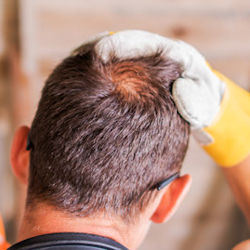Types of PPE
Head Protection
There are primarily two situations when employees must wear protective helmets: Protection from falling objects and exposure to electrical hazards.
1. Falling Objects
When there is a potential in the workplace for injury to the head from falling objects, the employer must make sure that each affected employee wears a protective helmet.
Some examples of work that might require helmets to protect from falling objects include:
- working below other workers who are using tools and materials that could fall;
- working around or under conveyor belts carrying parts or materials; and
- working below machinery or processes where material or objects might fall.
2. Electrical Hazards
The second situation requiring a helmet is for protection against electrical hazards. Whenever an employee works near exposed electrical conductors which could contact the head, the employer must make sure that a protective helmet designed to reduce electrical shock hazard is worn by the employee.
The employer should also furnish and make sure all employees and contractors engaged in construction and other miscellaneous work use proper head protection. Engineers, inspectors, and visitors at construction sites must also wear protective helmets when hazards from falling or fixed objects, or electrical shock are present.
Knowledge Check Choose the best answer for the question.
2-1. When is a protective helmet required to be worn in the workplace?
You forgot to answer the question!

